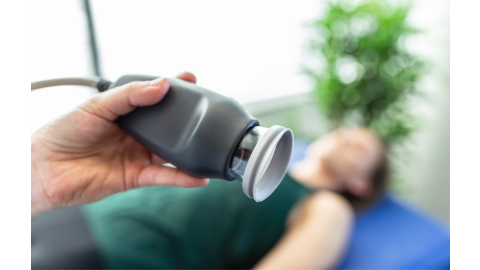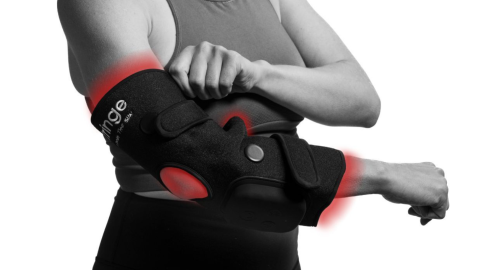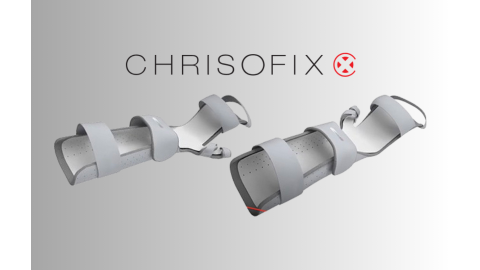As a healthcare provider, you know that falls can be a serious threat to your older patients’ health. Fall prevention screenings, assessments, and interventions are crucial to keeping your patients safe. Rely on the research to guide your decisions and prevent your patients from falling.
Below are summaries of fall prevention research. Click on the study title to read the full article:
Fall Risk Assessment Research
Fall Prevention Interventions Research
More on Fall Prevention
Fall Risk Assessment Research
Title
Participants
415 participant cohort of residents between 50 and 89 years of age, randomly sampled from a basic resident registry, with uniformly distributed ages and genders
Summary
This study looked at the predictive impact of physical performance (knee extension, knee flexion, grip strength, one-leg standing time, two-step test score, stand up test, and Skeletal muscle mass index) on cognitive deterioration, increased fall risk, and inability to maintain HRQOL (health-related quality of life).
Results
Focusing on the fall risk results, the study found that a one step shift in standard deviation on the grip strength, two-step test, and stand-up test, increased fall risk by 39%, 38%, and 23% respectively. It stated that diminished physical performance is related to serious problems (including increased fall risk) in older individuals. The study also concluded that the higher the physical function that can be maintained in seniors, the better the other conditions remain.
Taking Action
Using the physical performance tests from this study on your patients can help you identify who is most at risk for falls and will need fall prevention interventions.
A standard deviation shift in the grip strength test using a Jamar Hand Dynamometer most increased the participant’s fall risk. A grip strength test is simple and quick and would make it easier for you to identify patients at a higher risk of falling. The Jamar Smart Digital Hand Dynamometer makes testing even easier and works with an app that allows you to track patient grip strength over time.
Help your patients maintain good physical function by recommending physical therapy and home exercises using products like the TheraBand Stability Trainer and TheraBand Hand Xtrainer.
*****
Title
Participants
42 primary care providers and 116 outpatients between the ages of 65 and 95 years old with a documented fall requiring medical treatment or 2+ falls in the past twelve months
Summary
This study was conducted at an outpatient primary care clinic of a large academic medical center in the Pacific Northwest of the U.S. A retrospective chart review examined the extent to which participants received a multifactorial risk assessment and interventions.
Results
The study found that the frequency of assessment of fall risk factors varied between 24% (home safety) to 78% (vitamin D levels). It also found that evidence-based interventions were recommended 73% of the time once fall risk factors were identified. The two fall risk factors that were most infrequently addressed were current medications (21%) and home safety (24%). Additionally, the study found that using a structured visit note template independently predicted the assessment of fall risk factors.
Taking Action
How can you use this information to help your patients? Use a structured visit note template to help facilitate the completion of fall risk assessments in your busy clinic.
Now that you’re aware that medications are infrequently addressed, be sure to discuss both prescription and OTC medications with your patients and review the possible side effects that can lead to falls (dizziness, etc.). The study found that medication was an independent risk factor for falls, so discussing alternative medications with a pharmacist should also be considered.
Home safety was also under-addressed in the study. Discuss home safety with your patients and recommend possible products to make their home safer, like grab bars and shower chairs. If possible, order a home safety evaluation for high fall risk patients by a physical or occupational therapists.
Fall Prevention Interventions Research
Researchers have examined the effectiveness of a variety of fall interventions to find out what is effective. Here are some of the results from studies on:
Home Modification Interventions
Exercise Interventions
Clinical Interventions
Multifaceted Intervention
Meta-Analysis of Fall Interventions
Home Modification Interventions
Title
Environmental Assessment and Modification to Prevent Falls in Older People
Participants
238 participants who were 70 years old or older and had a history of falls within the previous 12 months.
Summary
This study compared the effectiveness of home assessment and home modification suggestions made by an occupational therapist (OT) with the same intervention by a home care worker (HCW). This intervention took place at the participant’s home.
Results
The study found that fall rates were reduced by 46% for participants that received a home assessment by an OT. The intervention was not successful when completed by a HCW.
*****
Title
Participants
360 participants with an average age of 81 (standard deviation of 6.4), admitted from home to a geriatric hospital, all who showed a functional decline (especially in mobility)
Summary
This study compared participants that received either a geriatric assessment with recommendations followed by regular care at home (control group) or a geriatric assessment with a home visit, assistance with home modifications, and training on the use of mobility aids (intervention group). An occupational therapist (OT) and either a nurse or physical therapist (PT) conducted the home assessment using a home safety checklist and made two to three subsequent visits.
Results
31% fewer falls were recorded in the intervention group compared to the control group. The intervention was most effective in a subgroup of participants who had 2+ falls in the past year prior to recruitment into the study. The study concluded that home intervention, modification facilitation, and training on technical and mobility aids was effective in older subjects with a history of recurrent falls.
Taking Action
Both of these studies examined the effectiveness of home modification to prevent falls. Because the presence of an occupation therapist was crucial to the effectiveness of the intervention, if you recommend a home safety evaluation, the evidence suggests it should be done by an OT. The visit should focus on home modifications that can help prevent falls and training on using mobility aids to reduce your patients’ fall risk.
Exercise Interventions
Title
Participants
81 participants from 65 years of age or older, living independently, who had fallen 3+ times in the previous year
Summary
This study examined the effectiveness of an individually-tailored group and home exercise intervention on fall rates.
The intervention group completed group and home exercises. Group classes (once a week for one hour) focused on improving static and dynamic balance, muscle and bone strength (using free weights and TheraBand resistance bands), endurance, flexibility, gait, functional skills, and how to avoid falling.
The home exercise program (twice a week for one hour) included a warm up, endurance session, OTAGO and resistance band exercises, flexibility exercises, and a cool down. Participants wore hip protectors during exercise sessions, but not during daily life.
The control group completed basic home exercises (warm up, mobility and flexibility exercises, and cool down) twice a week.
Results
The intervention group’s fall rate was reduced by 33% after 36 weeks. Over the entire study (including a 50 week follow up period), the fall rate of the intervention group was reduced by 54%.
*****
Title
Effects of a Group Exercise Program on Strength, Mobility, and Falls Among Fall-Prone Elderly Men
Participants
59 male participants aged 70 years old or older, living in the community, who had at least one of the following fall risks: impaired gait, mobility, and/or balance, leg weakness, or 2+ falls in the previous six months
Summary
This study focused on increasing strength and endurance and improving mobility and balance through a group exercise program. Conducted at a VA ambulatory care center, the program consisted of strength training (ankle weights, resistance bands, etc.), endurance training (bikes, treadmills, etc.), and balance training (rocking balance board, balance beam, etc.). The participants completed three 1.5 hour sessions a week for twelve weeks. This exercise intervention group was compared to a control group that continued their usual activities.
Results
Participants in the intervention group were 66% less likely to fall compared to participants in the control group. This study calculated the fall rate as the number of falls per hour of physical activity.
Taking Action
Both of these studies show that exercise is one intervention that is proven to reduce falls. The studies focused on group exercise using resistance bands, ankle weights, rocker boards, and other strength and balance products. One study also implemented an exercise program at home.
Talk to your patients about possible balance and exercise programs available in their community or through their independent living or assisted living facility. Some patients might also benefit from physical therapy orders to guide their exercise program.
The first study also had participants wear Safehip Hip Protectors to reduce their risk of hip fractures during exercise. This product might be useful for some of your high fall risk patients.
Clinical Interventions
Title
Participants
199 men and 246 women, 65 years old or older, living at home
Summary
This study examined the effects of a three year supplementation of 700 IU cholecalciferol (Vitamin D) plus 500 mg of calcium citrate malate (Calcium) taken daily compared to a placebo taken daily.
Results
The intervention and placebo groups did not have significantly different fall rates for the male participants. The ambulatory women in the intervention group reduced their risk of falling by 46%. The vitamin supplement was even more effective in less active women whose odds of falling decreased by 65%.
*****
Title
Participants
306 women, aged 70 years old or older, with cataract
Summary
Participants were randomized to either expedited (about four weeks) or routine (about twelve months) cataract surgery. Participants kept a fall diary and received follow up care every three months.
Results
The study was not able to demonstrate a reduction in first fall risk during the one year follow up period. However, the study did find a 40% reduction in the risk of recurrent falls. It also found a 34% reduction in the overall rate of falls and a reduction in fracture risk.
Taking Action
The first study suggests that prescribing Vitamin D and calcium supplements to fall risk patients can help reduce their risk of falls. The second study shows the importance of vision in reducing falls. Discuss the importance of seeing an ophthalmologist (eye doctor) every year to ensure your patients have the proper prescription in their glasses/contacts and to detect and treat cataracts.
Multifaceted Intervention
Title
Participants
204 participants aged 60 years old or older, living at home or in a care facility, who called emergency services for an ambulance after a fall but were not taken to the hospital
Summary
Participants were randomly sorted into the control group which received standard care or the intervention group which was referred to a falls prevention rehabilitation service.
The intervention consisted of as many home sessions as clinically necessary and optional group sessions.
The OT- and PT-led groups held sessions twice a week for six weeks where they led group exercises and provided fall prevention education (safe footwear, reducing fall hazards at home, etc.). The PT also taught strength and balance exercises to participants in their home. Additionally, the OT conducted a home hazards assessment and either provided equipment (ex. grab bars) or suggested modifications (ex. improve lighting).
A nurse reviewed the participants’ medications and assessed their blood pressure. Other referrals were made if needed.
Results
A 55% reduction in fall rates was found in the intervention group compared to the control group. The reduction in falls led to a corresponding decrease in the number of times an ambulance was called as a result of recurrent falls.The study also found improvements in the activities of daily living (ADLs) of the intervention group and a reduction in fear of falling.
Taking Action
This study suggest that multiple interventions can lead to a reduction in falls. Make sure you consider all of the factors that potentially increase your patient’s risk of falling and implement the appropriate interventions for each risk factor. A fall risk assessment form can help ensure you don’t miss anything and take all necessary precautions for each patient.
Meta-Analysis of Fall Interventions
Title
Interventions for Preventing Falls in Older People Living in the Community
Participants
111 randomized trials of interventions to reduce falls in older people living in the community
Summary
This study had two review authors independently assess trial quality and extract data. The authors searched MEDLINE, EMBASE, CINAHL, the Cochrane Bone, Joint and Muscle Trauma Group Specialised Register, CENTRAL (The Cochrane Library 2008, Issue 2), and Current Controlled Trials through May 2008.
Results
The study found multiple-component group exercise, Tai Chi, and multiple-component home-based exercise all reduced the rate of falls and the risk of falling.
Assessment and multifactorial intervention as well as gradual withdrawal of psychotropic medication both reduced the rate of falls but not the risk of falling.
Pacemakers in patients with carotid sinus hypersensitivity and the first eye cataract surgery also reduced the rate of falls.
Overall, home safety interventions did not reduce falls, but they were effective for people with vision impairment and those at a high risk of falling. An anti-slip shoe device reduced falls in icy conditions. Vitamin D also did not reduce falls, but may do so in people with lower Vitamin D levels.
Taking Action
Exercise interventions reduced both the risk and rate of falls. Ensure your high fall risk patients have an exercise program that they can follow at home and the proper equipment or that they are signed up for a strength and balance or Tai Chi class. This study suggests that additional research is needed to determine when other interventions are most effective.
More on Fall Prevention
Now that you know more about what fall prevention interventions work, it’s time to put them into practice. Keep reading to learn more about fall statistics, how to reduce falls in your patients, and everything else you need to know about fall prevention to keep your patients safe!
Medical Disclaimer: The information provided on this site, including text, graphics, images and other material, are for informational purposes only and are not intended to substitute for professional medical advice, diagnosis or treatment. Always seek the advice of your physician or other healthcare professional with any questions or concerns you may have regarding your condition.








 France
France Australia
Australia






